Reducing Customer Acquisition Cost with Data
How to maintain a profitable eCommerce business



Harnessing the power of smart data has emerged as a key objective for eCommerce companies looking to make informed decisions that will support the future success of their business.
If there was only one example of a success story in the industry, it would have to be Amazon. Amazon is everywhere: It’s the number-one most valuable brand worldwide. Last year alone, it accounted for 50 percent of all online revenue on Black Friday. Just a few days later, Cyber Monday was its biggest shopping day in history. And these are not isolated cases. Ever since the launch of its Prime program, about two-thirds of U.S. households have become members. The key to Amazon’s success, among others, has been the company’s ability to analyze every single bit of data, generated from its operations, and more specifically, from Every package it has ever shipped.
The fact is, you cannot really manage something that you cannot measure. Amazon is your textbook example. Yet, eCommerce is much more than Amazon itself.
eCommerce is about the industry giants, just as much as it is about that one-person company somewhere across the globe, selling its products on Shopify. It, too, needs to leverage marketing data to match the wants and needs of its customers, and make the most accurate business decisions.
In 2017, retail eCommerce sales had their moment on the global stage: They exceeded $2 trillion, a nearly 25% increase from the year before, according to Findings by emarketer. Mobile, too, played a key role, as mCommerce accounted for almost 60% of all digital sales.
Clearly, there is a trend underway, and quality marketing data can help you leverage it.
It is easy to attract your first customers. Why? How much does it cost to acquire them, and what is their value – as well as the value of every subsequent customer – to your brand? These are the questions we look at and answer in this white paper. Our focus is especially on the customer acquisition cost (CAC), how you come to it, and why it is so important.
After all, data-driven eCommerce is not just about Google Analytics (as much as we all love it). It is about applying a number of different metrics – from website traffic and conversion, to social media, email and search. Purchase reviews, too, if you will.
You need to be on top of your often big and diverse data, coming up with new assumptions to test on a regular basis. Monitor, test, evaluate. Then repeat.
Data is strong when all data is coming together. The times when visualizing a single, isolated channel was enough are over. Connecting to all data sources sounds easy – but the devil lies in the detail. API implementations become challenging and it is the job of experts to get every relevant detail from the source you need.
At the end of the day, eCommerce is more than just selling your products online and keeping track of your sales. It’s about leveraging large amounts of data coming to you from a number of different sources.
It can be complex and messy, sometimes even painful. Yet, once you decide to master your data, you will be rewarded with deep, meaningful insights and happy long-term customers that get the most out of your brand. We know it’s worth it.
eCommerce is on the rise – industry giants are reaping the benefits of their hard work just as much as smaller players are. Mobile commerce, or mCommerce, is contributing to this trend, too. It accounted for almost 60% of all digital sales over the past year and does not seem to be slowing down.

In an effort to keep up with the market, eCommerce companies are looking to leverage new techniques and target their customers with precise and timely offers. Data is playing a key role in this process. Figuring out just what customers want, need and are willing to spend their money on is not based on (educated) guesses anymore, but on facts.
And it’s not just simple facts, but ones that are becoming more specific and more accurate by the day.
According to Research by Bigcommerce, personalization and localization will be two of the key features for eCommerce brands in 2018, and especially their ability to leverage niche data to create relevant and powerful customer experiences.
Data-driven eCommerce is really the only eCommerce you need to concern yourself with. It is based on monitoring and analyzing various metrics – from website traffic to search, email and social media, and dealing with large amounts of data on a daily basis. This data is not just big, but also scattered and diverse, and it requires a great deal of attention to make sure its analysis generates valuable insights.
As many of you may have already experienced, this is often easier said than done.
“Overall the web is pretty sloppy, but an online store cannot afford to be. You can’t wait for customers to come to you. You have to figure out where they are, go there and drag them to your store.”
Paul Graham | Co-Founder of Y Combinator
If there is one thing you need to nail in order to grow your eCommerce business, it’s your customer acquisition cost (CAC). And no, that doesn’t mean that’s all your company depends on but it is indeed one of the most important metrics. Unsustainable CAC will melt profits, it’s as simple as that.
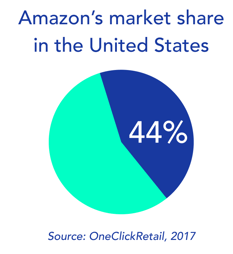
Take Amazon for a moment. “Amazon, which accounts for about 45% of all US eCommerce, has amassed cumulative losses in the billions, and even after more than 20 years still operates at below average industry margins” writes Steve Dennis, Senior VP of Strategy & Multichannel Marketing for the Neiman Marcus Group.
“It’s clear that the eCommerce divisions of many major omni-channel retailers run at a loss – or at margins far below their brick and mortar operations.”
So, even the industry giants are feeling the pressure.
The fact of the matter is that attracting your first batch of customers can be rather easy and inexpensive – whether you opt for a low-cost marketing strategy or simply word of mouth. Those very first customers are curious and eager to try out something new. They are an obvious target. It becomes more difficult, though, when you have to reach out to audiences with a different profile.
Where do you find those people and how do you connect with them? Are they 100% interested in what you’re offering, or would they need some convincing? The chances are that the latter is more likely. This means you would need to invest time and resources to identify the best way to reach those people, develop the content that would most resonate with them, and the trigger that would encourage them to buy.
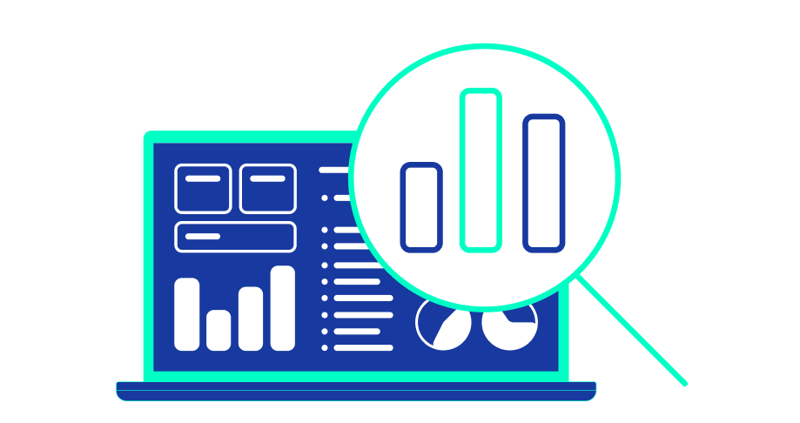
At the end, all of this goes into your CAC. Whether you invest money in ad campaigns, or time (which is also money) in crunching marketing data, it all counts towards it.
As an eCommerce business owner, you would likely want to expand your business – beyond those initial customers – in two main steps:
Growing your business starts with just that: growth. Growth in the number of customers you have. In order to attract more people, you would have to put money into social media ads, campaigns, and other paid reach. The broader the audience you want to reach, the more (financial) resources you would have to dedicate in the process. This is the point where acquiring new customers becomes more expensive, bringing your CAC up.
Of course, as a result, people will start following, talking about and engaging with your brand. Eventually, many of them will become paying customers.
And while acquiring new customers is a key step towards business growth, retaining them is just as important. As an eCommerce company, you would want your customers to come back and make more than their initial purchase. You would want them to keep contributing to your bottom line. This is where analyzing and understanding your marketing data comes into play.
To continuously cater to the wants and needs of your existing customers, you need to know, and in ever-more detail, exactly what they are looking for. There is a reason personalization and localization are among the hottest trends in eCommerce this year – people want your offering to address them directly; they want to get the most out of your brand.
Invest in your marketing data and look for patterns, analyze findings and make smart business decisions based on what each of your customer segments want. At the end of the day, the more a customer spends on your products, the more valuable they are for your business – or the higher their lifetime value (LTV). While you would want to minimize your CAC to drive profits, a high LTV can justify a somewhat higher initial cost. A high LTV is, thus, crucial.
In the following chapter, we dig deeper into how exactly CAC is calculated, why you would want to keep it low, and how it relates to your customers’ LTV and your overall marketing return-on-investment (ROI).
Your cost of acquiring new customers – and especially customers that are likely to come back to you – is what can make or break your eCommerce business. Have it too high, and your company may tank. Nail it, though, and you are on your way to success.
If a decade ago, acquiring new customers was a matter of launching one big ad campaign and hoping to attract as many people as possible, today, you can target them on a number of different channels until you find just the right combination. Not to mention the fact that, once acquired, those new customers can then be retargeted to generate even further sales.

At first glance, the calculation seems rather straightforward: You divide your sales and marketing expenses by the number of new customers acquired in the period the money was spent. So, if one month you spent €1,000 and you acquired 100 new customers, then your CAC is €10.
The catch is that CAC is just a number – and it can be both good or bad, depending on the future purchase behavior of the customers you’ve just acquired. If you got yourself a one-time buyer, then €10 was probably a high cost to pay. But if you got yourself a customer who comes back and makes purchases every other week, then €10 may have well been a reasonable investment.
Therefore, you need to always place your CAC in the context of customer loyalty and retention.

A study by Bain & Company has found, in fact, that only a 5% increase in customer retention can account for more than a 25% increase in profit. “Why?,” author Fred Reichheld asks. “Return customers tend to buy more from a company over time. As they do, your operating costs to serve them decline. What’s more, return customers refer others to your company.”
Keeping your customers close is what your eCommerce business should be aiming for. Target and retarget them with relevant campaigns, and study their purchase behavior to offer them just what they want and need.
It shouldn’t come as a surprise then that CAC goes hand-in-hand with your customers’ lifetime value (LTV). Put simply, LTV is the projected revenue that a customer will generate for your company during their lifetime. Measured in parallel to your CAC, it makes it possible – and a lot more accurate – to assess if your marketing efforts are actually paying off.
“A 5% increase in customer retention can account for more than a 25% increase in profit.”
Source: Bain & Company
Your customers’ LTV needs to always be higher than your CAC in order for you to be making profits in the long run. A ratio of 1:1 means you’re spending too much, thus losing money for every acquisition you make. What you should be aiming for instead is a ratio of 3:1. This means the value of a single customer would be three times higher than the cost you paid to acquire them.
Keep in mind, though, that too high of a ratio is also not ideal. In the case of a 4:1 ratio or higher, you are underinvesting in your marketing activities and likely missing out on new business. The bottom line is to find the right balance for your eCommerce business.
There are dozens of platforms and channels nowadays that you can use to target and acquire new customers. Without question, that can become overwhelming. It is, therefore, crucial for you to identify the platforms and channels with the most feasible LTV:CAC ratio, and scale them. The first step in this process is calculating your CAC per channel.

Now, because you can target customers on so many different platforms (from social media, to blogs, to email), your CAC will therefore be spread across different channels and time periods. So, how do you calculate your CAC per marketing channel?
A campaign you launch next week may have an effect in two weeks or in two months. Or never. Figuring out which of your advertising efforts count – and when – is key to really gaining insight into your CAC.
This is where the marketing attribution model can come into play. The idea of marketing attribution is to essentially tie conversions to the exact channels that were involved. You can decide between first-, last- and multi-touch attribution.
First- and last-touch attribution takes into account a single marketing touchpoint: The former focuses on the first marketing channel that engages a user, while the latter does the exact opposite – it focuses on the last channel and often the one that leads to the conversion. Multi-touch attribution, on the other hand, gives credit to a combination of touchpoints, making it a lot more flexible and diverse. Of course, it would require you to have a lot more specific and accurate data about your marketing performance.
“Multi-touch attribution has the power to be the most accurate but relies on a properly chosen model and accurate data collection. Unless your company has a particularly complicated marketing mix, a single touchpoint attribution can be just as effective.”
Matt Leap | Marketing & Analytics Professional
Knowing the specific performance of each of your marketing channels can help you identify the ones with the lowest CAC. After all, the more you focus on lower CAC channels, the more customers you can gain with a fixed amount of money. It is also more likely that their LTV will quickly offset the initial cost of acquiring them.
Knowing the specific performance of each of your marketing channels can help you identify the ones with the lowest CAC. After all, the more you focus on lower CAC channels, the more customers you can gain with a fixed amount of money. It is also more likely that their LTV will quickly offset the initial cost of acquiring them.
At the end of the day, your goal is to run a successful eCommerce business. Having an insight into your marketing performance – especially CAC and your customers’ LTV – is key to knowing which customers, channels and approaches to focus on. Though, knowing what to focus on is one thing, but knowing how to make improvements is a whole new ball game. And data can help you with it.
In the next chapter, we look closely into the need for eCommerce businesses to go beyond Google Analytics and leverage both online and offline data to optimize their CAC, and create a customer experience that is fit for your purpose.
“Insight into your marketing performance – especially CAC and your customers’ LTV – is key to knowing which customers, channels and approaches to focus on.”

First click is quite interesting. 18 years ago it was all about last click checkout and since then more and more focus is on first click when it comes to searches, campaigns , displays , landing pages etc. First click is now more important than ever because of the competition in today’s market. Customers want to be inspired quickly, without too much hassle.
Peter Hvidberg, Head of eCommerce & Customer Service, Intersport Group Denmark A/S
In general, eCommerce is a relatively young but complex part of a modern business: with logistics, marketing, tech and constant optimisation, there is a lot of stuff that needs to be taken care of. An important part of your way exceeding your growth target is a sustainable client acquisition strategy – the more mature your business, the more complicated it gets. We know from our daily work with agencies and eCommerce companies that this growth phase is especially hard to manage as many processes need to be adapted for scale and are therefore very cost-intensive. So, targeting a large audience in order to grow becomes particularly tricky for one reason in particular: keeping your cost per acquisition (CPA) sustainable to have a positive ROI in the long run.

Of course there are several stakeholders responsible for the acquisition part. It starts with your eCommerce team who is mainly responsible for your shop – content as well as tech. Closely connected you have a marketing team, who are directly responsible for the execution of your owned and paid marketing activities. On a strategic level, they are taking care of customer acquisition and your brand awareness. Well, and so much more, of course. In the end it all comes together at the BI or analytics team, who is trying to accumulate all the relevant data from your sales, eCommerce and marketing activities. Getting all the relevant data into your system and to extract meaningful insights – that’s what we are calling data-driven business. Less gut feeling, more hard numbers. And the more experimentation, the more advertising networks, the more sales channels – the more data you will have to digest for your analytics.
So, when scaling your business, the first step is normally to increase your marketing budgets and number of advertising channels. This is where it gets quite complicated to obtain the big picture of your marketing activities. You often have to log into multiple tools to get your campaign performance numbers before you’re able to create a meaningful report for your stakeholders. More still, this tedious process is prone to human errors and represents a highly inefficient use of your team’s resources.
So, in order to get the most important channels up to speed, you have to connect GA with your SEO tools, email stats as well as Adwords and other PPC channels. Automating the data integration process and getting as much data as possible – from each and every source – is a challenge you and your IT team need to tackle better soon.
The growth of online sales as a percentage of all retail continues to grow, though eCommerce itself is beginning to mature. Indeed, online retailers have previously had to change their marketing strategies in response to changing market trends. Whereas a novel concept or a low price was once enough to get customers to visit the site, the maturity of the channel meant that companies needed to shift their focus towards more sophisticated analysis that examines more fragmented ways visitors find their site and the rate at which those visits convert to sales.
As eCommerce evolves, shoppers have an expectation that businesses will be marketing to them with relevant and often Personalized messages, so “spray and pray” marketing is falling on deaf ears. Consumers are looking for the shopping experience itself to add value, and it’s up to the brands to deliver. However, with the rapid advance of technology, shifts in consumer tastes and changing habits in multichannel shopping, it is difficult for companies to provide such an experience. Consumer acquisition has become a moving target. To hit their mark, marketers need to think and act in different ways to capture new business.

Not including online and offline data will result in missing a huge part of the journey the customer will make. The key to understanding the whole path is to know which channels a customer will use and what will contribute to a customers purchase. It will give marketers valuable insights on what they should focus on and what works best.
Marketers are in a tough position: first, they are already battling the competition in a consumer-first world that is often driven by low pricing and therefore smaller margins. Secondly, according to Gartner research, marketing budgets are declining steadily in order to become cost-efficient – so there seems to be limited room for experiments. But in reality, the opposite is the case: just because marketers need to sharpen their focus on data and analytics, this will give way to more efficient targeting and better reach for improved ad performance.
“Marketers need to sharpen their focus on data and analytics, this will give way to more efficient targeting and better reach for improved ad performance.”
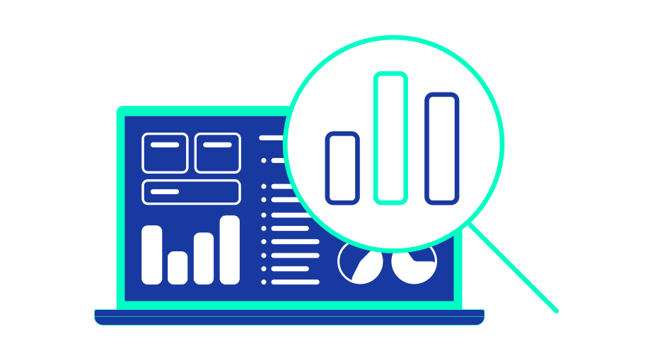
Collecting data without knowing what you want to do with it is an expensive and time consuming task. Just digging into the big amount of data to see what it reveals is an inefficient approach. To be efficient in capturing data you should ask yourself a simple question: Which question do I want to answer with this data? Knowing and understanding the problem, will drive you to the right data.
Understanding your customer behaviors will lead to the delivery of a better service and increased revenue. The complex path for marketers is the buying behaviour and the behaviour of customers using multiple channels and devices to make a purchase.
Connecting your online and offline data will reveal valuable information of your customers. Without connecting the online engagement and sales, a marketer will never know if their online campaign was a success. With the right technology, you are able to connect your customers online and offline activity on different devices and via different channels in order to create a single customer view.
It is a complex industry, but does that mean that your data capture and storage solutions should be a closed and compact box? No! You need to make sure you can access your marketing data, so you can easily manage and understand what you found. While there is an endless list of service providers for your operational marketing tools, you should think twice when it comes to the right analytics platform – as we’ve said before, getting the big picture of your data is crucial for your long-term success.
There are several options for you to choose from, starting from your data integration service over your data storage, processing and management platform. In the end your choice should increase your data and insights quality.
Data can be misleading or hard to read, on the other hand it can provide you with powerful insights. Knowing that customers can be influenced by your company’s ethos and any previous decisions you or your company may have made, puts you in a position to better understand your data. However, there is a risk that data could be misinterpreted to support false hypotheses and sanction ill-judged marketing decisions.
50% of marketers are facing a skills gap within their organization. If your organization is experiencing the same challenge, you can always look to partner up with external specialists who can support you in solving these challenges.
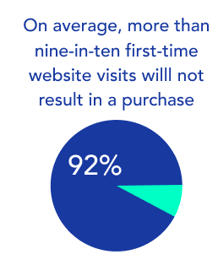
Take a closer look at the overall customer journey, from the first stage of interaction with your brand to the end stage of brand advocacy. To capture new customers, marketers have to act and need to think different. According to Episerver, who tried to evaluate consumer shopping and what customers expect of their brand, 92 percent of your first time visitors to your website do not result in a purchase.
For you it’s crucial to present yourself as a valuable brand that is worth returning to. Offer a great customer experience. Understand what each segment of your future users does and what they are looking for.
Try to come up with a strategy that also incorporates offline customers (if you have any, of course) as those people do already have a connection to you as a brand.
“Insight into your marketing performance – especially CAC and your customers’ LTV – is key to knowing which customers, channels and approaches to focus on.”
As we’ve said before, eCommerce is about the industry giants, just as much as it is about that one-person company selling on Amazon or Ebay. Everyone needs to leverage marketing data to match the wants and needs of its customers, and make the most accurate business decisions.
But the latest eCommerce startups have turned business economics upside down. Some businesses are acting like they don’t need to make any profits at all. There needs to be a time that these businesses will start and need to make profit. Until then, it’s managing your loss as effectively as possible. Sounds crazy? Well, for most businesses it’s their daily work.
eCommerce businesses often rely on investors money in order to grow. But without proper profits, what is the exact reason investors will bring in more money in further funding rounds? When they believe the business they are investing in is doing well they will get the confidence to reinvest in that particular company. After all, the global eCommerce market is 2.3 trillion dollar strong and still growing quickly.
Compared to the conventional businesses, eCommerce businesses spend a lot of money on different business areas and formats. Since there is only limited scope to identify the best opportunities, efforts to drive growth should be innovative and experimental. Well, we agree this is kind of a no-brainer. But after all, those experiments fail more often than they succeed.
In the end there is only one question left, how can an eCommerce business succeed when they have a lack of profits? The most legit answer lies in the sales growth and an increase in customers. The most important task for an eCommerce business, therefore, is to focus on bringing in more customers.
Acquiring customers through paid media channels can be a quite confusing and expensive experience – but there is no real growth without this. For many marketers and businesses, this is the basis of their success: add appealing products to the shop and boost them with a few paid ads, analyse the results and repeat. Sounds pretty easy, huh? Well, it depends.
“Present yourself as a valuable brand that is worth returning to. Offer a great customer experience. Understand what each segment of your future users does and what they are looking for.”
It is easier than ever to start a business or to reach your target audience online. Thanks to smart companies and their ability to understand and track a user’s behaviour, reaching the right person at the right time is easy. Or, is it? Many eCommerce marketers only deal with a small handful of platforms, such as Google Adwords and Facebook and are quite happy with the possibilities these native campaign managers offer. But what if you want to dig deeper and add your display campaign data to your analysis? You may need to incorporate data from Adroll or Sizmek that is enriched with data from Meetrics. You may also have a number of local media deals and some campaigns on your affiliate publishers are from influencers.
Moreover, the bigger your business grows, the more you will have the necessity to adding TV data, outdoor performance data and offline sales data from Nielsen or GfK into the mix – and don’t let us get started with weather data.
So, you get the message. Before you know it, you might find yourself drowning in the sheer amount of data generated by your marketing activities – unable to generate the best insights to optimize your campaigns, improve your all-important KPIs and lower your acquisition cost.
If not too long ago marketers were focused on analyzing historical data to understand their customers’ wants and needs, they now do so using current data on an ongoing basis. Collecting and processing data in near-real time is important not only to keep track of what customers are responding to, but also to identify patterns that help predict purchasing behavior.
Say, a car manufacturer wants to know if there are any seasonal fluctuations to the amount and type of sales it makes. With the help of data analytics, it is possible – and easily so – to go back years and check if there is a correlation between the weather outside at the time and the type of cars sold.
Research has shown, in fact, that many manufacturers experience a peak in the sales of convertibles during late spring and the summer, and of 4×4 vehicles during the winter.
With this knowledge, companies can not only anticipate such trends, but follow them in real time too, to make sure they are providing their customers with the most relevant product and information. Of course, this may seem a bit trivial at first, but keeping in mind that many stakeholders may need to be convinced of a marketing plan, these smart data insights do the job.
At the end of the day, smart data has immense potential in predicting customer behavior, and perhaps even more so, in giving time-sensitive incentives to current and potential customers. Having relevant, current insights for your marketing analytics at hand is one of the most crucial assets a business could leverage nowadays.
“One key benefit of personalizing messages is that it recognizes the customers as individuals. By marketing one way to prospects, another way to those that have already purchased a product and another way to long-term, high-value customers you can make your marketing messages far more compelling and effective.”
Dave Chaffey | smartinsights.com
Data creates value as it provides information about your users. The tricky thing is: the biggest chunk doesn’t help. Our experience shows: data is good. More data is not. We know from working with marketers and agencies that it is easy to drown in data if you don’t know what you’re looking for. One of the biggest challenges marketers and agencies are facing is having a data strategy – a plan what to do with data and how to create value from it. You can’t do business if you don’t know your customers well enough – learning about what your customers really want, need and are willing to spend their money on is somewhat of a main priority.
To get the best insights, you need to invest time and resources into collecting and analyzing the right bits of information. As a marketer, you are likely swamped with tons of data already that, to the best of your knowledge, may be accurate, relevant and insightful. But what if it isn’t – at least not entirely? Can you really trust all those numbers? How can you be sure that there is no missing or incoherent data? Or what if there are blind spots and you don’t even know where to start looking for them? To be able to fully rely on your data, you need to make sure that you don’t compromise on its quality. After all, you generate and collect data to have a fact-based decision-making process, so you better make sure you have one!

The thing with marketing data is that, while two pieces of information may look similar or almost identical to the human eye, to a data analytics tool, they may be completely different.
Even when they signify one and the same thing. The most common confusion stems from having various time and date formats, as well as inconsistencies in the spelling of users’ names and addresses.
Ok, let us quickly summarize what we’ve learned so far:
So, in order to lower your cost per acquisition, you really need to understand the potential lifetime value of each of your clients. Obviously there is a huge difference in being a travel company and someone who sells, say, fidget spinners online. The main goal should always be to be profitable with the first purchase of any given client. There is only a very small number of people coming back to your store – so overspending on your acquisition will most likely result in a negative ROI, even in the long run.
So, by now you should know almost everything about your CAC and ways to optimise your data. But what other ways do you have to lower your CPA? The best way to an optimised ratio between CAC and LTV is to increase your clients LTV. So easy, isn’t it? We know this is the toughest nut to crack. Still, there are plenty ways to further optimize your marketing efforts in order to facilitate growth. We’ve put forward a list of five considerations.
More traffic at a constant conversion rate? Or improved conversion rate at the expense of traffic? The generally accepted answer is “both” and we would also agree. But if you are struggling to commit to improving both, due to limited human or financial resources, we suggest you instead focus your attention on improving your conversion rate, which we would argue represents the best long-term strategy.
Aim to become a media company by making videos, sharing your company story, writing blogs and engaging as much as you can. Also, focus on organic channels and try to grow a huge email list, recruit evangelists who are willing to post with your free swag on Instagram, use affiliates and referrals to get in front of a new audience.
 Sure, in bigger cities you won’t find any problems, but we know from our clients that struggle with poor last-mile delivery, increased costs for returns etc. So, go through your entire supply chain and optimize for growth – maybe you have to invest in a professional warehouse or build one yourself. While we understand financial limitations, this should never come as an excuse for growth.
Sure, in bigger cities you won’t find any problems, but we know from our clients that struggle with poor last-mile delivery, increased costs for returns etc. So, go through your entire supply chain and optimize for growth – maybe you have to invest in a professional warehouse or build one yourself. While we understand financial limitations, this should never come as an excuse for growth.
The mother of eCommerce. Obviously, it’s much more expensive to lose customers than acquire new ones. But why? According to Adobe’s Digital Index Report, on average only 8% of your customers are returning or repeat purchasers. And those 8% make over 40% of the total revenue. So, it’s really lucrative to cater to this minority – but most companies don’t see it that way.
There is a clear priority towards new customer acquisition over retention, as Accenture found out. Less than half of retailers say their loyalty programs get the support of their management – a clear sign that there is a lack of focus, money, energy and love spent. In short, returning purchasers are nothing but crucial for your long term growth. Preventing just 1% of your clients from churning can lead to an overall revenue increase of 5%. Think about this for a second.
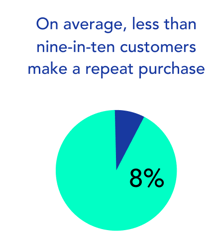
So, the retail and eCommerce industry is re-inventing the wheel on a daily basis and is maybe the fastest growing industry on the planet. Consumers tend to be less loyal than in the past and are more likely to switch brands and behavior.
Your strategy should go way beyond the classic reminder to visit the store after your customers purchased something more than one year ago. Embrace personalization and find a good way to appeal to your clients in a more productive, smart way. In the future, AI and smart assistants will lead the way in understanding when a client is about to churn or what they are looking for. But until then you should really get the most out of your existing data: from website analytics, to paid media and customer data.
Try to find a way to blend data from your campaigns to really understand the way your existing clients behave. Get the big picture of your advertising by connecting siloed data streams and find new connections and causalties. Add data from all available sources and teach your team to use all your data to drive meaningful, personal campaigns and learn from each iteration.
This growth hacking mindset should give your team members the confidence to go and test everything in order to retain your clients – and do so by promoting integrated communication that makes use of all available channels. In the best case, you already have the right automation software in place – otherwise this should be one of your next steps.
One of the great challenges eCommerce managers are facing is the attribution model. What drives sales, and the acquisition of new customers? And which element should get the credit? Do we go for the easy solution – which is like first click and based on Google Analytics? Or we spend a lot of money on sales modeling and approach the market in a holistic way? Only half of respondents are satisfied with their attribution model, so I guess there are a lot of business opportunities here
Dave Chaffey | Head of eCommerce, Spies.dk at Etail Conference 2017
Even the best white papers come to an end. Let’s recap what we’ve learned:
Basically there are three ways to accelerate the growth of your eCommerce business:
We promised you would be able to lower your CAC by using data and we really hope we could give you practical advice as well as inspiration for your data-driven ambitions. Remember, more data does not mean more insights. Always aim for more meaningful insights by getting the right data and invest a big part of your energy into analytics to accelerate your data-driven decision making! If you want to learn more about the way we can help getting all your data and getting the most out of it, feel free to browse our free resources on the website or get in touch with us directly.
“One of the great challenges eCommerce managers are facing is the attribution model. What drives sales, and the acquisition of new customers? And which element should get the credit? Do we go for the easy solution – which is like first click and based on Google Analytics? Or we spend a lot of money on sales modeling and approach the market in a holistic way? Only half of respondents are satisfied with their attribution model, so I guess there are a lot of business opportunities here”
Dave Chaffey | Head of eCommerce, Spies.dk at Etail Conference 2017